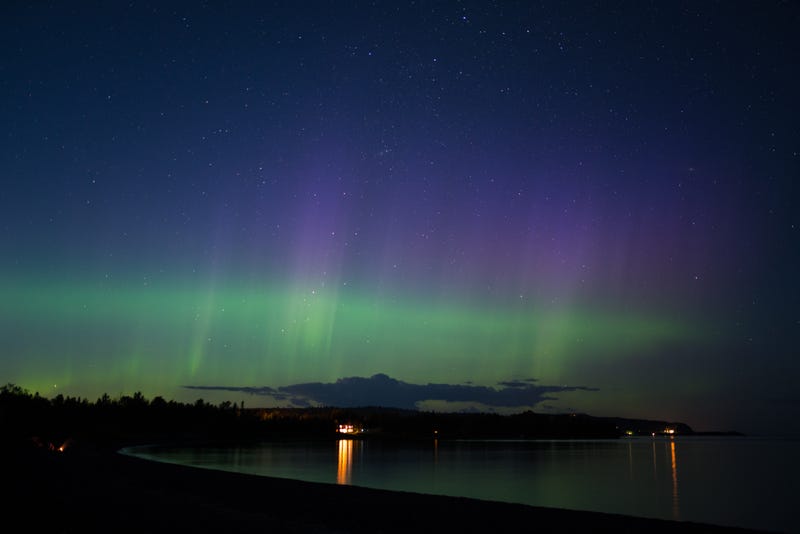
This might be a great weekend to stay up late, or get up early, to see the phenomenon known as the “Northern Lights” across Minnesota, Wisconsin, the Dakotas and even Iowa.
According to former WCCO Meteorologist Mike Lynch, there is a small chance Friday overnight into Saturday to see them, but a much better chance Saturday into Sunday. Which just so happens to be Halloween of course.

The ideal times to see the activity is 1:00a.m. to 7:00a.m. Typically the very early morning, around 4:00a.m., is the best.
You’ll also want to make sure you’re well away from city lights and light pollution. That means heading out well away from the metro areas into the country.
According to Lynch’s Facebook page:
“Updated Aurora Forecast: It sure looks like there's a low to moderate chance of northern lights late tonight after midnight but a very good chance overnight Saturday into Sunday morning because of a solar flare yesterday. The forecast is for clear skies and they'll hardly be any moonlight to get in the way. The best place to see them is out in the dark countryside, as far away from light pollution as you can get. There's a potential that this aurora display may even reach into Iowa. With any forecast of northern lights, there's never any guarantees for strength and timing but it sure looks good for this weekend."
The best news for Minnesotans is the moon is waning so it won’t create much light, plus skies are expected to be mostly clear. The same is true south in Iowa. There are more clouds expected in Wisconsin and South Dakota, but not enough to totally block those states out from viewing it.
Commonly referred to as the Northern Lights, it is scientifically called the Aurora Borealis, and they are the result of interactions between the Sun and Earth's outer atmosphere. The Aurora Australis is the southern hemisphere counterpart to the Aurora Borealis.
The Sun emits electrically-charged particles called ions and they move away from the Sun in a stream of plasma (ionized gas) known as the solar wind. As the plasma comes in contact with the Earth's magnetic field, the ions are agitated moving around the Earth. Some of the ions become trapped and will consequently interact with the Earth's ionosphere causing the ions to glow.
The highest northern latitudes (or southern latitudes) see the bulk of this activity, but on occasion can be seen much further south. They’re also much more commonly seen in the winter months with less haze in the sky and longer nights.
Massive amounts of solar activity, which is what we’re seeing this weekend, can create amazing aurora displays. That’s why even parts of Iowa could get a glimpse of the Northern Lights in the next two days.
As Lynch says, there is never a guarantee you'll see the Northern Lights, but this is clear an opportunity as we've had in the Upper Midwest in a few years.
LISTEN on the Audacy App
Sign Up and Follow Audacy
Facebook | Twitter | Instagram